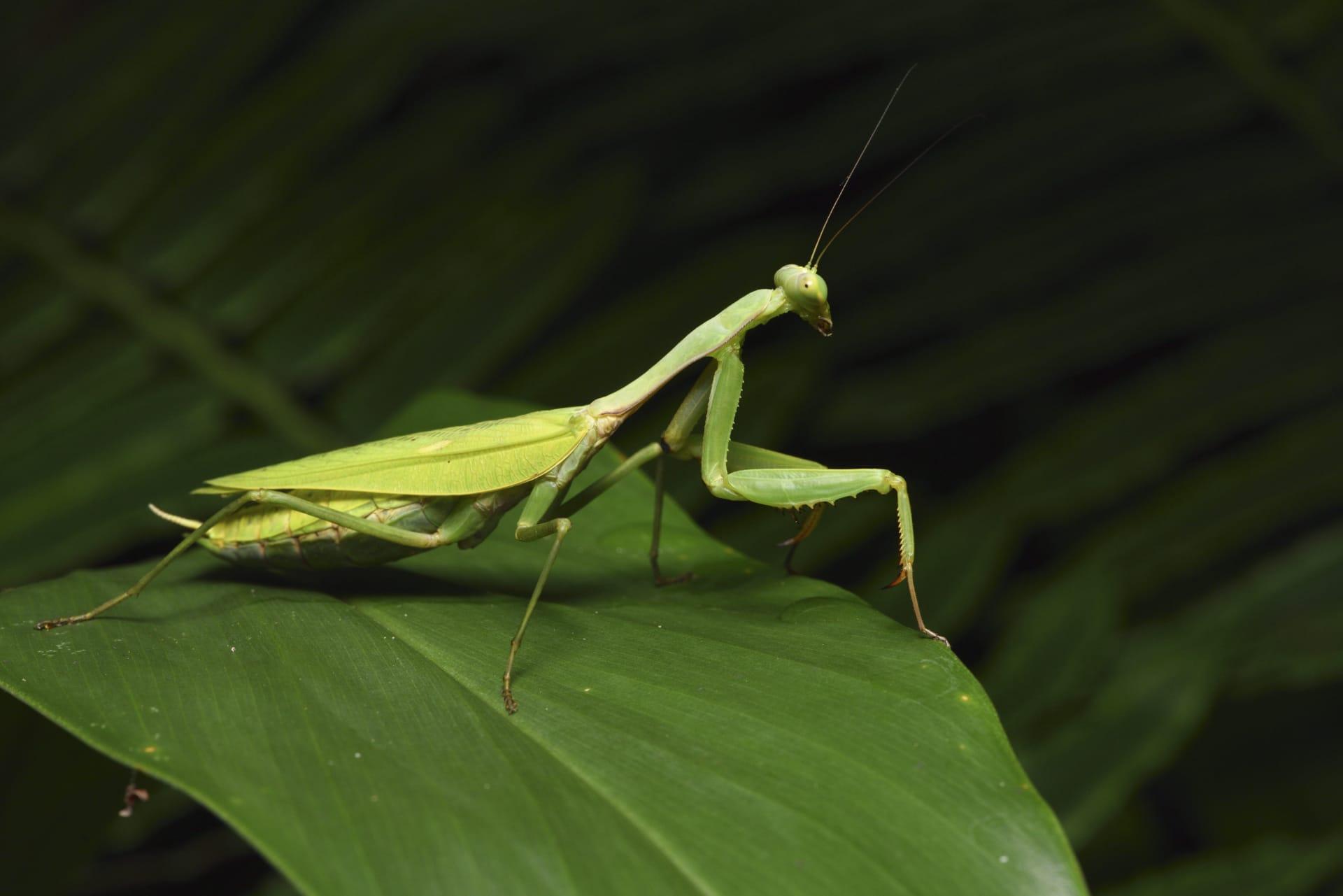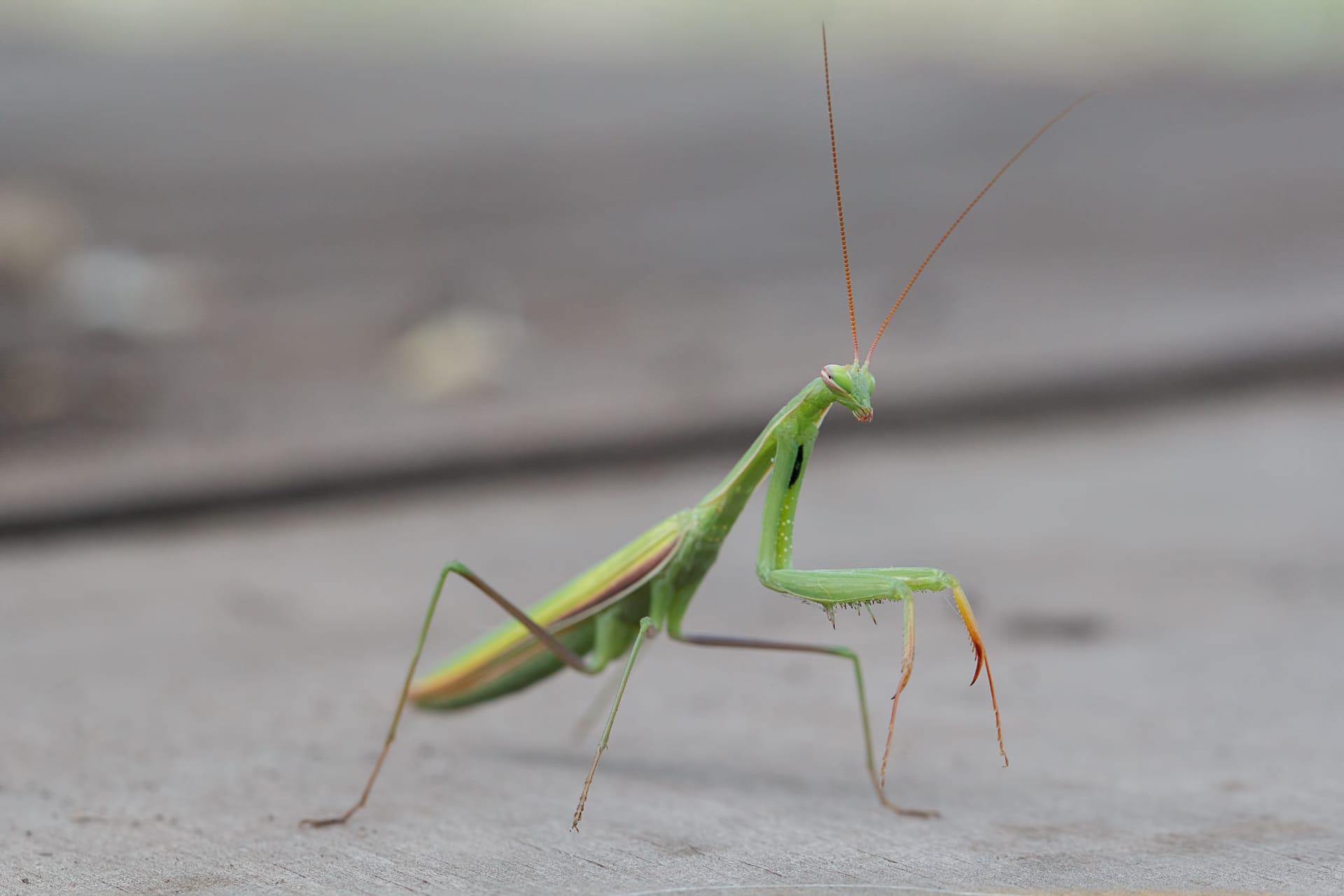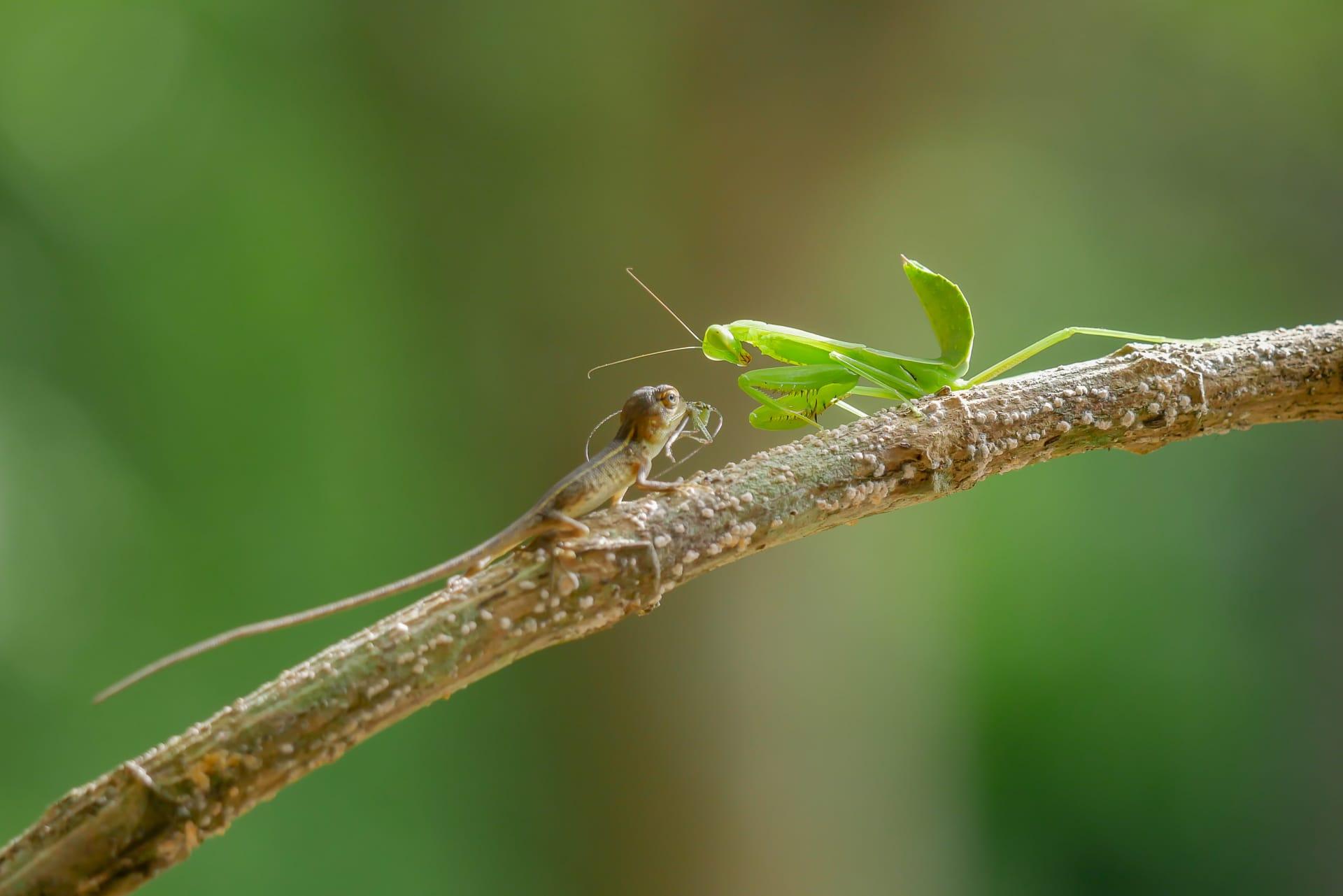Praying Mantis Trivia
- Home /
- Trivia Question /
- Animal /
- Praying Mantis Trivia
1
Question: How long can a praying mantis live?
Answer: A praying mantis can live from 6 months to a year, depending on the species and environmental conditions. In captivity, with ideal conditions of temperature, humidity, and food availability, some mantises can reach the upper end of this lifespan range.
Question: What's the significance of the praying mantis's unique posture?
Answer: The praying mantis is named for its prominent front legs, which are bent and held together at an angle that suggests the position of prayer. This posture is not only a part of their hunting strategy, allowing them to swiftly extend their arms to capture prey, but it also helps in camouflaging them among leaves and branches, making them less visible to both predators and prey.

2
Question: Is it true that female praying mantises always eat their mates?
Answer: While it's a common belief, female praying mantises do not always eat their mates. This behavior is observed in less than 30% of mating encounters in the wild. It is more likely to occur in captivity, where the males cannot escape easily. The act is thought to provide the females with additional nutrition required for egg development, especially when food is scarce.
Question: Can praying mantises really turn their heads 360 degrees?
Answer: Praying mantises can turn their heads about 180 degrees to look over their shoulders, but not a full 360 degrees. This wide range of motion is rare among insects and gives them a significant advantage in spotting potential prey or predators without moving the rest of their body.

3
Question: How do praying mantises hunt their prey?
Answer: Praying mantises are ambush predators, meaning they wait in stealth for their prey to come close. They use their camouflage to blend into their surroundings and then use their powerful and speedy front legs to snatch their prey with precision. They can catch a variety of insects and, in some cases, even small birds or frogs.
Question: Do praying mantises have good eyesight?
Answer: Yes, praying mantises have remarkable eyesight. Their two large, compound eyes give them a wide field of view and the ability to gauge depth and movement accurately, which is crucial for timing their attacks precisely. They can detect even the slightest movement up to about 20 meters away, making them efficient predators.

4
Question: What role do praying mantises play in the ecosystem?
Answer: Praying mantises are significant predators in the insect world and play a crucial role in controlling the population of other insects, thus maintaining ecological balance. They help in managing pests in gardens and farms, making them beneficial for agriculture and horticulture.
Question: Can praying mantises fly?
Answer: Yes, many species of praying mantises can fly, especially the males. They are more likely to fly to escape predators or to find mates. Females are generally heavier and not as adept at flying as males. Their flight is not graceful, often described as more of a gliding or fluttering motion.

5
Question: How do praying mantises reproduce?
Answer: Praying mantises reproduce through a process that begins with a courtship dance by the male to attract the female. After mating, the female lays eggs in a foam-like case called an ootheca, which hardens to protect the eggs from predators and environmental conditions. Depending on the species, an ootheca can contain dozens to hundreds of eggs.
Question: Are praying mantises solitary or social insects?
Answer: Praying mantises are solitary insects. They come together only to mate and are otherwise independent. From their nymph stages, they are predatory and can even exhibit cannibalistic behaviors if food is scarce, which is why they lead solitary lives to avoid competition and predation from their own kind.